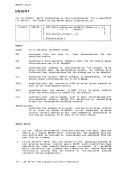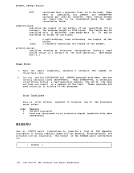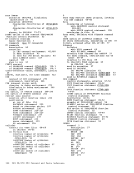it contains all of the command formats,
syntax rules, and operand and option
and macro instructions for general users.
The
descriptions of
information on using the editor,
debugging facilities of
familiar with the contents of the
this
may find additional useful notes in the
Concepts" describes the components of the
conventions used in this manual, so that
you can interpret the command format
contains information about the
search
those not for general users.
complete format descriptions, and operand
and option lists, for the
available to
description contains usage notes, and lists
responses and error messages (with
associated return
command.
describes the sub commands and macros
available in the environment of the
command. Each subcommand description
contains usage notes and summarizes the
Where applicable, additional information is
the sub commands available in the debug
applicable, lists the responses to the
su bcomma nd.
Preface
describes the control statements, special
variables, and built-in functions you can
use when you create
execute in
descriptions contain usage notes, where
applicahle.
lists the formats and operands of the
can use when you write programs to execute
in
appendixes:
also has three
lists the filetypes that are recognized by
the
settings that the editor supplies for
logical tabs, truncation, verification,
logical
"Appendix B:
of access method services and
programmers using access method services
and
used throughout this publication:
functions of
when you issue the command:
set dos on
system, and is not
of the
use
sometimes referred to
they use the as
to files that are in the
format used by
Preface iii






















































































































































































































































































































































































































